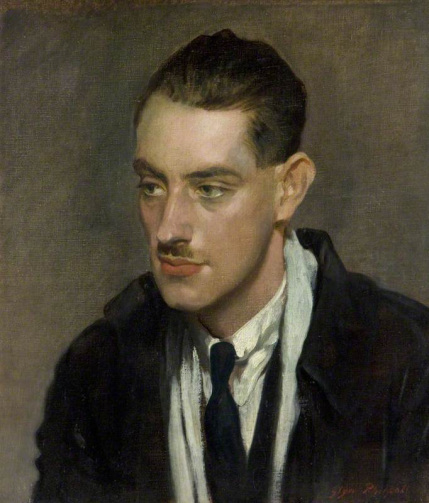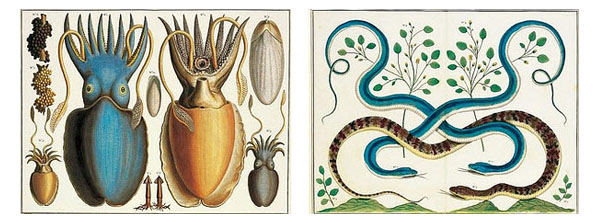A Pocket of Bourbon
“We are not always ready for the things we buy. Some are better suited to a lifestyle, income or body that is beyond our means to acquire. Others require more skill to use or capacity to enjoy than we can muster. It’s almost as if they were bought by or for someone else. And in a way they are. They are bought, as my overcoat was, often with little foresight but great enthusiasm, for the person we want to become: the kind of person who would use or wear these things.” Stefanos Christoforos
Breach of Close
By Stefanos Christoforos

 ATHENS Greece—(Weekly Hubris)—4/29/2013—Unlike most people I know, I own nothing older than myself. No family heirloom or grandfather’s watch, nothing except for a tweed overcoat. I bought it when still a graduate student from a thrift shop in Cambridge that stocked the high-quality, if conservative, coats and jackets that have clothed genteel New Englanders for decades and that the same New Englanders, with their horror of wastefulness, sent to the shop when the time came through death or rotundity to dispose of them.
ATHENS Greece—(Weekly Hubris)—4/29/2013—Unlike most people I know, I own nothing older than myself. No family heirloom or grandfather’s watch, nothing except for a tweed overcoat. I bought it when still a graduate student from a thrift shop in Cambridge that stocked the high-quality, if conservative, coats and jackets that have clothed genteel New Englanders for decades and that the same New Englanders, with their horror of wastefulness, sent to the shop when the time came through death or rotundity to dispose of them.
The shop was the place to go if you were a college student with a need for more formal clothes but without much money or sense of fashion. The labels often read Brooks Brothers and J. Press, though the only label to be found on mine said, Reine Wolle. It made me wonder whether its previous owner had been some German intellectual or physicist who had escaped Nazi Germany and come to teach at Harvard but, of course, the coat wasn’t that old. However, judging from the cut and the supposition that it had been in the previous owner’s possession for some time, it was certainly older than I.
The truth is, I had little need for an overcoat at the time. I didn’t even own a suit that could be worn under the overcoat, so I wore it over jeans and crew-neck sweaters. I didn’t much go to the kind of place you’d wear an overcoat to, but I hoped that one day I might.
We are not always ready for the things we buy. Some are better suited to a lifestyle, income or body that is beyond our means to acquire. Others require more skill to use or capacity to enjoy than we can muster. It’s almost as if they were bought by or for someone else. And in a way they are. They are bought, as my overcoat was, often with little foresight but great enthusiasm, for the person we want to become: the kind of person who would use or wear these things.
Though I eventually grew into it, ignoring its history and pretensions to make it mine—there was a time I’d wear it with my Doc Marten boots—I wasn’t entirely comfortable in the coat when I first bought it. Not only was it bought second-hand, it also felt second-hand, at least at first. I was like a stepfather whose new partner’s children still didn’t like him. What my coat must have thought of me! What it could have said of its new owner!
Talking coats are found only in children’s stories now, but they were the kind of narrator one would find in the so-called novels of circulation that were popular in the 18th and 19th centuries–stories told from the perspective of a thing or animal. These “it-narratives” offered an unusual perspective on an increasingly commercial society in which more and more objects changed more and more hands. Not surprisingly, many of these narratives are told from the point of view of a coin: there are the adventures of a silver penny, a sovereign, a rupee, and a Scottish guinea note. Or they are told by objects that change occupants, things such as hackney coaches and the (very modern for the time) air balloon. But they were also books like The Genuine and Most Suprizing Adventures of a Very Unfortunate Goose-Quill, and The Memory and Adventures of a Flea, as well as tales of pens, thimbles, pin cushions, and dolls.
Coats had adventures, too. In 1762 a book as published entitled The Adventures of a Black Coat, containing a Series of Remarkable Occurrences and entertaining Incidents, that it was Witness to in its Peregrinations through the Cities of London and Westminster, in Company with Variety of Characters, as related by ITSELF.
The book begins at the end, with the black sable coat, now old and “curtailed by the degrading scissars of the botcher,” being joined in his solitary wardrobe by an unblemished “gay white coat.” White’s youthful arrogance spurs Sable to tell his new closet-mate the story of his life so that the young coat may profit from his misfortune. Sable goes on to relate the series of “conductors”—so he describes the men who have worn him—whom he accompanied on their way through the city to their (often unhappy) fate: a theater-struck Irish footman, a young man with aspirations of entering the service of a “man of distinction,” a confidence man—the alacrity with which the coat changes conductors is astonishing.
My coat didn’t change conductors much. I can’t be sure of the previous owners, but I suspect there was just one.
I wore it for work and play, at home and on my travels. I wore it on the best and the worst of my days with Matthew. I remember wearing it to my therapist’s office just a few weeks after buying the coat—if only because I couldn’t immediately figure out where I was supposed to hang it, and my indecision seemed to me at that moment one of the reasons I was there in the first place.
I remember that I was wearing it one very cold evening waiting in line with Mark outside a fish restaurant on a Boston pier. I was still in graduate school at the time. I don’t remember what we ate but I remember the overcoat because I had been carrying a flask of bourbon in one of its pockets so that we would have something to warm ourselves with while waiting. It seemed to me at the time a very man-of-the-world thing to do, the kind of thing that I imagined Mark would do but very much out of character for me. Mark, who was ten years my senior, had an overcoat similar to mine, but his was only a few years old and bought first-hand.
I wondered if Mark could sense that I had never carried a flask on me. If my coat could talk, he could have told Mark how uneasy I felt having it with me, how I would slip my hand now and then into the pocket to right the flask up from its side, running my fingers around the neck to see if any liquid was leaking out. It would have told him how desperately I wanted him to like me. I think now of Sable and his anxiety that he might be too large for the “young gentleman of graceful appearance” who is thinking of buying him. And so, as the man tries him on, Sable contracts the threads in his fabric to hold the young man more tightly. To be a better fit. I, on the other hand, felt I was too small for Mark, not smart or worldly enough, and I expanded myself to please him.
But Mark, a much wiser man than I, didn’t need to hear the coat to sense my unease, nor did he want me to be anyone other than who I was, though I was too inexperienced to see this. He praised what he called my “foresight,” and made a show of relishing the bourbon, an enthusiasm that seemed to me quite genuine (and reassuring) at the time, though I later learned that Mark didn’t like hard liquor much. And if he found my fumbling attempts to please him amusing or endearing, he spared me the embarrassment of telling me.
If there are things such as coats that we buy but which are not right for us, there are also persons in our lives we are not ready for.
It is as if Lachesis, in measuring the length of our lives, tangled the thread of our fates, with the result that some of our lovers come too soon in our life, others too late.
But Mark and I met at the right time: I, trying to grow older, trying to become the man he was; he, yearning to be young in a way he had never dared. It was a relationship which by definition was doomed to be short-lived. Without being conscious of doing so, Mark taught me how to outgrow him, and I revealed to him why the years he sought to recover were forever lost. In the end, neither was a cause for mourning. Borrowed clothes never fit well, anyway.
Of the clothes I brought with me from Boston, this coat is the only item that remains. My coat has a tale to tell, but it is now just as neglected as that of Sable.
I don’t wear the coat much these days, nor does it afford me pleasure when I do, though few clothes do that now in any event. It hangs in my closet next to much younger clothes, the bomber jackets and gabardine that accompany me on my travels in the city and beyond. It could still be a handsome coat on a more graceful looking conductor, or at least on a needier one. But I won’t give it away. Utility and pleasure and beauty are not the only reasons we keep things. Memory is another. And memory is the attachment that is last to leave us.
![]()
Note: For those interested, there’s a four-volume set of these it-narratives published by Pickering & Chattoo. Some of the individual tales may be found online via Google Books in a poorly scanned facsimile.
Also: Glyn Warren Philpot (1884-1937) was an artist and sculptor whose early work brought him considerable renown as a portrait painter (he painted portraits of the poet Siegfried Sassoon and J. H. Whitley, Speaker of the British House of Commons). But Philpot’s portraits of his friends and lovers, including his manservant, Henry Thomas, and paintings of the male nude, made his sexuality increasingly clear to a disapproving English public, and his work remained controversial until his early death at the age of 53. A brief summary of the artist’s biography may be found here.
This post has been assembled and reworked from bits and pieces of What’s Left of Nathan. Apologies for the “cross-posting” to those readers who have already seen parts of this, but it was a story I felt was worth retelling (in a better way, I hope).

2 Comments
Will Balk, Jr
Stefanos, I have only just stumbled across your essays; it seems selfish to avoid thanking you for the pleasure and enrichment these writings provide me, and your admiring editor insisted I take responsibility for my gratitude and write you my thanks.
Many, many years ago I lived in a leftist gay commune in DC; our dinner guest one night was the poet and author, Rita Mae Brown. Although she is now known for her silly light genre fiction, in the seventies Rita was a firebrand lesbian feminist member of a “sister” collective in Washington, the Furies. Her eloquence and her beauty and her anger were awe-inspiring to us, and I recall with both embarrassment and fondness sitting literally at her feet, listening and learning from a fine teacher.
Too many years have passed for me comfortably to squat on the floor; nonetheless, I am now figuratively at your feet, hungry for that compassion and beauty and insight that I am discovering in your essays.
So – Thank you, Stefanos.
Stefanos
Will, thank you very much for your generous comments. I confess I was overwhelmed by your praise for my writing. I haven’t heard my writing described in such a way (much less mentioned together with Rita Mae Brown).
Have you written about your time in the commune? I imagine you must have some fascinating stories to tell, and I’d be most eager to read them.
Thank you again, S./